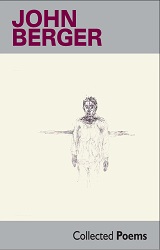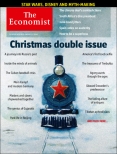John Berger on Giacometti

GIACOMETTI
I write this note as a reflection on John Berger’s essay on Giacometti. I chanced upon this essay in his book ‘On Looking’. What follows are mostly thoughts by Berger, but I often find that by trying to understand words, we transform them and hence these reflections are at least a rearrangement of Berger’s thoughts if not their transformation.
It might be considered a sign of artistic maturity when the artist begins to think of his body of work. It is the birth of a perspective that ties the many fragments of his creation into a cohesive whole. And in this awareness of a theme the artist might seek a completion to the body of work. In this sense Berger says, “It is as though his death confirms his work: as though one could now arrange his works in a line leading to his death.” Giacometti construed a body of work whose essential completion would be the artist’s death. This gave his works, while he was alive, the quality if being a preparation for what the future held. And to Giacometti the only irrefutable promise his future made was his mortality. What makes an artist think about life with the perspective supplied by his mortality? Berger offers a suggestion: “he simply could not in all honesty overcome his conviction that he had always been and would always be totally alone.” What has this loneliness to do with the sense of death? How does from it spring the theme which only death completes? The loneliness that Giacometti experienced originated from the proposition that reality could never be shared. This very private quality of an artist’s reality supplies him with that sense of isolation which nurtures an everlasting awareness of death. Under the inescapable canopy of isolation, the star of death shines ever so brightly. Once this is realized, death becomes the origin and the culmination of everything that one creates. Berger says, “This is why the content of any work is the incomplete history of his (Giacometti’s) staring at it. The act of looking was like a form of prayer for him, it became a way of approaching but never being able to grasp an absolute.” Giacometti’s works shone with an incompleteness only death could erase.
Berger attempts to explain what brings this extraordinary sense of loneliness among some individuals. He says it is the result of a certain temperament which Giacometti shared with Samuel Beckett. “If a man was purely animal and not a social being, all old men would have the expression of Giacometti”. Here I know exactly what Berger wants to say, because I know of another man with the same expression, Manik Ghodghate, a poet of the Marathi language. Ghodghate’s poems give us the impression that they have been written in an eternal evening which the poet inherited at birth. The quality of fatigue on the face of Ghodghate and Giacometti is that of an unavoidable inheritance of solitude. In this sense both the sculptor and the poet lived in an evening that longed for a final nocturnal completion.
Alberto Giacometti
Myth, Magic, and the Man
Laurie Wilson
Alberto Giacometti, one of the most important artists of the twentieth century, was also one of the most enigmatic. In this major new interpretation of Giacometti and his work, art historian and psychoanalyst Laurie Wilson demonstrates how the artist’s secret beliefs and emotional scars are reflected in his evocative sculpture, drawings, and paintings.
Wilson’s Giacometti was an extremely imaginative child who entwined fantasy and real-life experiences. As he matured, the artist combined fact and fancy into evolving myths, part conscious and part unconscious. Drawing on biographical data uncovered during a decade of research, Wilson reconstructs traumatic events and issues in Giacometti’s life—including family births and deaths in early childhood, world wars and their aftermath, and his intense and ambivalent relationship with his parents—and examines their profound effects on his artistic evolution. These startling new interpretations will forever change the way we understand both the man and his work.
Laurie Wilson, an art historian and a psychoanalyst, is Clinical Associate Professor of Psychiatry at the New York University Medical Center and teaches at the NYU Psychoanalytic Institute.
Alberto Giacometti with his work. (Photo by Paul Almasy.)
未完成的肖像:在賈克梅第的巴黎畫室
文/博客來編輯2009年09月02日
 未完成的肖像:在賈克梅第的巴黎畫室
未完成的肖像:在賈克梅第的巴黎畫室
如果我先把賈克梅第(Alberto Giacometti)和傑米斯?路德(James Lord)兩人之間的關係點明出來,也許你會覺得這本書會比較有趣。一九○一年生於瑞士偏僻小村莊的的賈克梅第,在一九二二年來到法國巴黎之後,在藝術的創作風格上(主要是繪畫和雕塑),一路走過了立體主義和超現實主義,最後回到寫實主義,在二十世紀的藝術家殿堂裡占有一席之地。而路德則是在法國住了很長一段時間的美國作家,和賈克梅第私交甚篤,這本書就在描寫一九六四年的九月十二日到十月一日,這十八天期間,賈克梅第以路德為模特兒,為其畫一肖像的創作歷程。
表面上看是賈克梅第在畫路德,但從這本書的鉅細靡遺的描寫中,似乎賈克梅第才是路德的模特兒,以文字書寫的主要對象。「如果賈克梅第早就知道我想將他作畫過程以及我們的交談內容全部記下的話,這將會影響作品的自然發展,以及我們對話的隨性所至。除此之外,我也不希望讓他覺得自己處於被觀察者的地位。」(頁199)從這段路德的「後記」當中,我們很難清楚地分辨究竟誰在看誰,以及誰在畫╱寫誰,其間的主╱被動交互關係,霎時間變得非常有趣。
老實說,他們倆在那十八天其實是互為主動也相對被動的,賈克梅第在那十八天裡常常陷入一種創作的瓶頸之中,導致情緒大壞,甚至信心大失,路德總是扮演情緒輔導者的角色,有時甚至採取一種技巧性的激將法,讓賈克梅第可以繼續未完成的肖像。賈克梅第有撕毀或破壞劣作的習慣,幸虧當時路德徵得賈克梅第的同意,「每天下午他開始作畫之前,我會將畫擺在通道上,然後拍下那幅畫的照片」,因而我們可以在書中看到這十八幅畫作照片,被擺置在每一天的描寫之前,當做「章名頁」來處理,令人值得注意的是,這十八幅畫作照片還真是天天都有不同(不知道這是否就是賈克梅第所說的「進展」),在閱讀本書的過程當中,每遇到某一天的畫作照片,都會不自覺地和前面幾天的比較看看,更令人好奇肖像畫到最後一天會變成什麼樣子(你必須壓抑自己的好奇心,才會有一些發現的樂趣)。我們更可以對照某天的畫作照片與當天賈克梅第的心情,多半能看到其間的情緒反應與筆觸的關係,這些種種都透過路德的文字書寫而被保留在書裡頭,賈克梅第似乎仍是活著的(他逝於1966年)、畫家與模特兒之間的關係也是活的、肖像畫也因為模特兒的大量參與而活了起來。「假如沒有我,他就無法畫出這幅畫,同樣的道理,假如沒有他,這幅畫也不會存在。」(頁113)
最後,他們倆人其實都早就知道這幅「路德的肖像畫」永遠無法完成,賈克梅第寫信給路德:「真希望有一天我可以再畫一次你的頭。」而路德則寫下這本書來紀念他的老友亞柏多?賈克梅第(本書的題辭)。(文/于善祿)
內容簡介
不論在美術館,或是畫冊上欣賞一幅畫作的時候,我們只能看見畫家決定要呈現的部分,也就是完成的藝術品。創作過程本身--藝術品從開始到完成的各個面貌--是十分隱晦的,觀者無從得知。過程往往比結果更感人與寫實,《未完成的肖像》一書正勾勒了二十世紀最偉大的一位藝術家的創作過程與方式。
詹姆斯.洛德(James Lord)擔任他的朋友亞柏多.賈克梅第(Alberto Giacometti)的模特兒,讓賈克梅第在十八天當中,以油畫方式畫下他的畫像。藝術家作畫之時,模特兒則以文字記錄下整個過程,並且每天用相機拍下那幅畫作的進展。這讓讀者得以窺見何謂藝術家,以及何謂真正的賈克梅第。這幅畫像有如散文一般,忠實記錄這位偉人以及他的藝術。本書是不同凡響的文學作品,也是描繪一位偉大藝術家的精采紀實。
*****
《賈珂梅悌》 黃琪著,北京:中國人民大學出版社,2004
內容簡介
阿爾貝托·賈珂梅悌,世界著名雕塑家和畫家。是20世紀西方現代藝術最主要的代表之一。晚期他開始致力于以“人和人的行爲”爲主題的雕塑創作。被認爲是“超現實主義運動”的傑出藝術家。看他的作品,會有種“比真實更真實、比痛苦更痛苦”的震撼。
畢加索對賈珂梅悌的雕塑曾給予很高評價,而瑞士攝影家鮮伊代克從青年時就與賈珂梅悌建立了深厚的友誼,從1947年到賈珂梅悌去世的20年間,他是被允許可隨意對賈珂梅悌的生活起居和創作進行拍攝的兩三個攝影家之一。在20年間,他不間斷地積累了關于賈珂梅悌的鏡頭,爲世界留下了一筆珍貴的文化遺産。他的攝影作品完美地再現了雕塑家的生活、創造和作品,還爲人們認識這位大師提供了新的和獨特的視角。
供職于瑞士蘇黎世渥地出版社的華人黃琪女士,曆時一年半,在中國京、滬、杭等16城市義務舉辦“雙藝合璧——鮮伊代克鏡頭中的賈珂梅悌”攝影作品展,並將其編輯出版的同名書籍無償贈送各地博物館。對于黃琪女士以及由她發起的這次真正純粹的文化交流活動,我們有理由奉上自己的敬意。
著者以采訪、研讀、思考和獨特視覺體驗爲基礎,以圖並舉的方式析述西方現代重要藝術家賈柯梅悔和他的創作。賈珂梅悌的藝術與人生密不可分,“人及人的生存”是其主題,“真實”是其核心,“尋找”貫穿其始終。賈珂梅悌生長在瑞士,長期生活在巴黎,書中也講述了他的家鄉和親人,講述了他的朋友薩特、熱內、貝克特、畢加索、斯特拉文斯基、卡鐵爾-布勒松和鮮伊代克。
作者簡介
黃琪,女,雲南昆明人。“文化大革命”時因家庭出身問題而上學受阻。從名師習書法,繪畫。1979年入廣州中山大學考古專業就讀(獲學士學位)。其後在北京中國博物館學會和文物出版社任職。主要隨中國古代書畫鑒定組工作,參與編輯《中國古代書畫圖目》、《中國美術全集》等書。1991年到瑞士蘇黎世大學藝術史系深造(獲碩士學位)。繼而在蘇黎世從事編輯和文化工作,兼事寫作。
媒體推薦
書評
是的,我繪畫和雕塑。自從我第一次拿起筆來,試圖完成一次速寫或一幅畫,就是爲了抓住並揭露一種真實。從那一刻起我就同樣爲了保護我自己,爲了養活我自己,爲了我的成長。同樣,我還爲了支撐,使我不放棄,使我盡可能去接近我自己的選擇。我還爲了抵禦,我要抵禦饑餓與寒冷,我要抵禦死亡。
目錄
猶在心目
望盡天涯路
賈珂梅悌在他朋友的眼中
澗戶寂無人
賈珂梅悌和他的故鄉貝蓋爾
月出驚山鳥
賈珂梅悌和他的巴黎角落
天寒紅葉稀
賈珂梅悌逝世的日子
燈火闌珊處
賈珂梅悌雕塑在原有的氛圍
附錄五則
賈珂梅悌生平大事記
翻譯人名中外文檢索
主要地名中外文檢索
引用文獻及采訪索引
圖版索引









